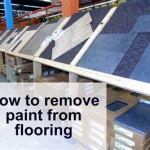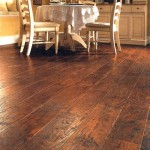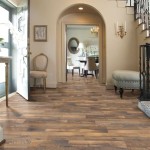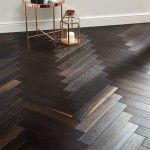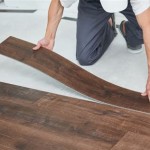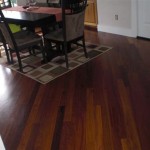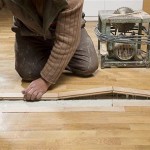Can You Put Vinyl Flooring on the Walls?
Vinyl flooring has long been a popular choice for floors due to its durability, water resistance, and affordability. However, its versatility extends beyond the floor, making it a viable option for wall applications as well. This article explores the feasibility, benefits, drawbacks, and installation process of using vinyl flooring on walls.
Durability and Water Resistance
One of the primary advantages of vinyl flooring is its inherent durability. Manufactured with a wear layer, it withstands scratches, scuffs, and impacts, making it suitable for high-traffic areas. This resilience translates well to wall applications, offering protection against daily wear and tear. Furthermore, vinyl flooring's water-resistant nature makes it an excellent choice for moisture-prone areas like bathrooms, kitchens, and laundry rooms. The waterproof surface prevents water damage and the growth of mold and mildew, contributing to a healthier and more hygienic environment.
Aesthetic Versatility
Modern vinyl flooring comes in a wide array of styles, colors, and patterns. From realistic wood and stone looks to vibrant geometric designs, vinyl offers a diverse range of aesthetic possibilities. This versatility allows for creative wall designs, enabling homeowners to achieve specific looks and complement existing décor. Whether aiming for a rustic farmhouse aesthetic or a sleek modern vibe, vinyl flooring on walls can provide a unique and stylish touch.
Cost-Effectiveness
Compared to other wall covering options like tile or wallpaper, vinyl flooring can be a more budget-friendly choice. The material itself is often less expensive, and installation can be relatively straightforward, potentially reducing labor costs. This affordability makes vinyl flooring an attractive option for those seeking to renovate or update their spaces without breaking the bank.
Installation Considerations
While installing vinyl flooring on walls is generally feasible, certain considerations are crucial for a successful outcome. The wall surface must be clean, smooth, and free of any imperfections. Any bumps or irregularities can telegraph through the vinyl, affecting the final appearance. For best results, a smooth substrate, such as plywood or drywall, is recommended. Proper adhesive is also essential for secure and long-lasting adhesion. Using the wrong adhesive can lead to peeling, bubbling, or other issues.
Types of Vinyl Flooring for Walls
Various types of vinyl flooring can be used on walls, each with its own characteristics and installation methods. Click-lock vinyl flooring, commonly used for floors, can be adapted for wall use, though it may require additional support and careful planning. Peel-and-stick vinyl tiles or planks offer a simpler installation method, making them a popular choice for DIY projects. Sheet vinyl, while less common for walls, can provide a seamless and waterproof surface, particularly suitable for wet areas.
Preparing the Walls
Proper wall preparation is paramount for successful vinyl installation. The walls must be thoroughly cleaned to remove dust, dirt, grease, and any loose debris. Existing wallpaper should be removed, and any imperfections in the wall surface should be filled and sanded smooth. Priming the walls is also recommended to ensure proper adhesion of the vinyl and to create a uniform surface for application.
Adhesive Options
Selecting the correct adhesive is critical for a durable and long-lasting installation. Different types of vinyl flooring require specific adhesives. Consult the manufacturer's recommendations for the appropriate adhesive for your chosen vinyl product. Some adhesives are designed for porous surfaces, while others are formulated for non-porous substrates. Using the wrong adhesive can lead to inadequate bonding and potential problems down the line.
Cutting and Fitting
Accurate measurements and precise cutting are essential for achieving a professional-looking finish. Carefully measure the wall area and cut the vinyl flooring accordingly. Using a sharp utility knife and a straight edge will ensure clean and accurate cuts. For intricate cuts around corners, outlets, or other obstacles, a jigsaw or other specialized cutting tool may be necessary. Test-fitting the vinyl pieces before applying adhesive is always advisable to ensure a proper fit.
Maintenance and Care
Vinyl flooring on walls is relatively easy to maintain. Regular cleaning with a damp cloth and mild detergent is typically sufficient to remove dust and dirt. Avoid using abrasive cleaners or scouring pads, as these can damage the vinyl's surface. For stubborn stains, a specialized vinyl cleaner can be used. With proper care and maintenance, vinyl flooring on walls can provide a durable and attractive finish for years to come.

How To Install Vinyl Plank Flooring On Walls Europine

Can Vinyl Flooring Be Used On Walls Home Expo Asia

Can You Install Vinyl Flooring On Walls L Antic Colonial

Lvt Versatile For Floor And Wall Covering S

Laminate And Vinyl Cladding Finfloor

Diy Wood Accent Wall Using Vinyl Planks Love Renovations

Diy L And Stick Vinyl Plank Accent Wall Hometalk

Can You Install Vinyl Flooring On Walls L Antic Colonial

E Z Wall L Press Vinyl Plank Decor Project

Can You Use Vinyl Plank Flooring On Walls Home Design
See Also
